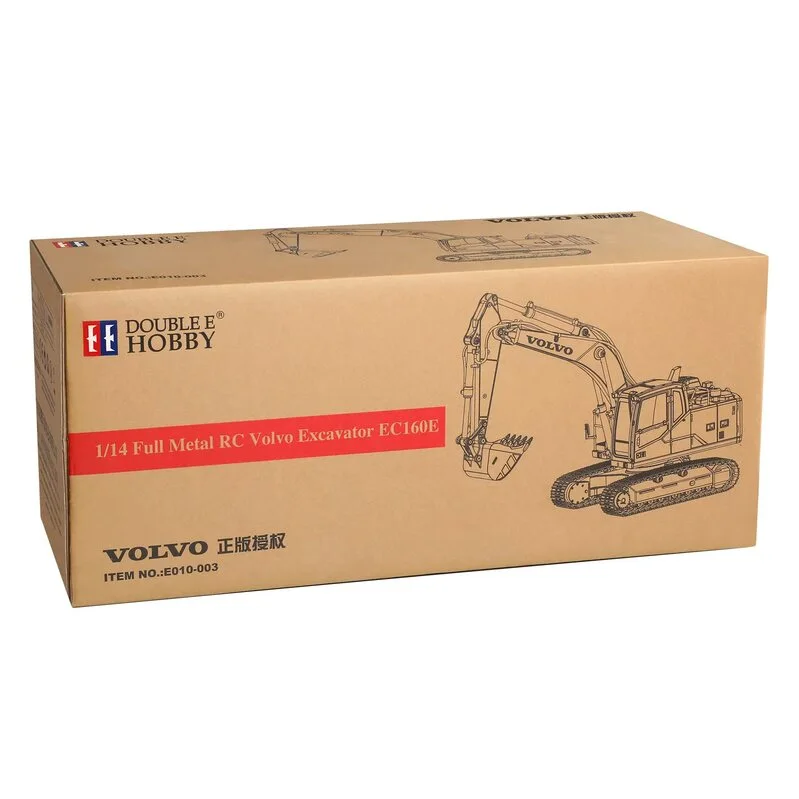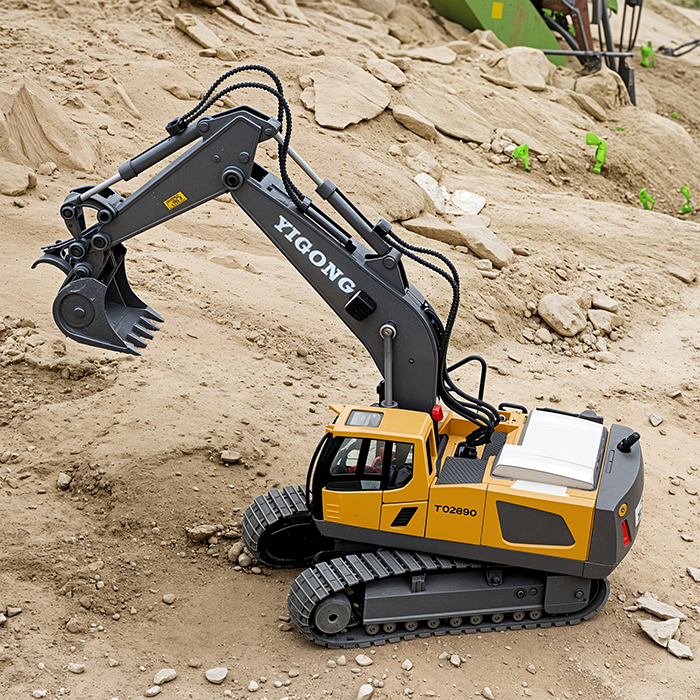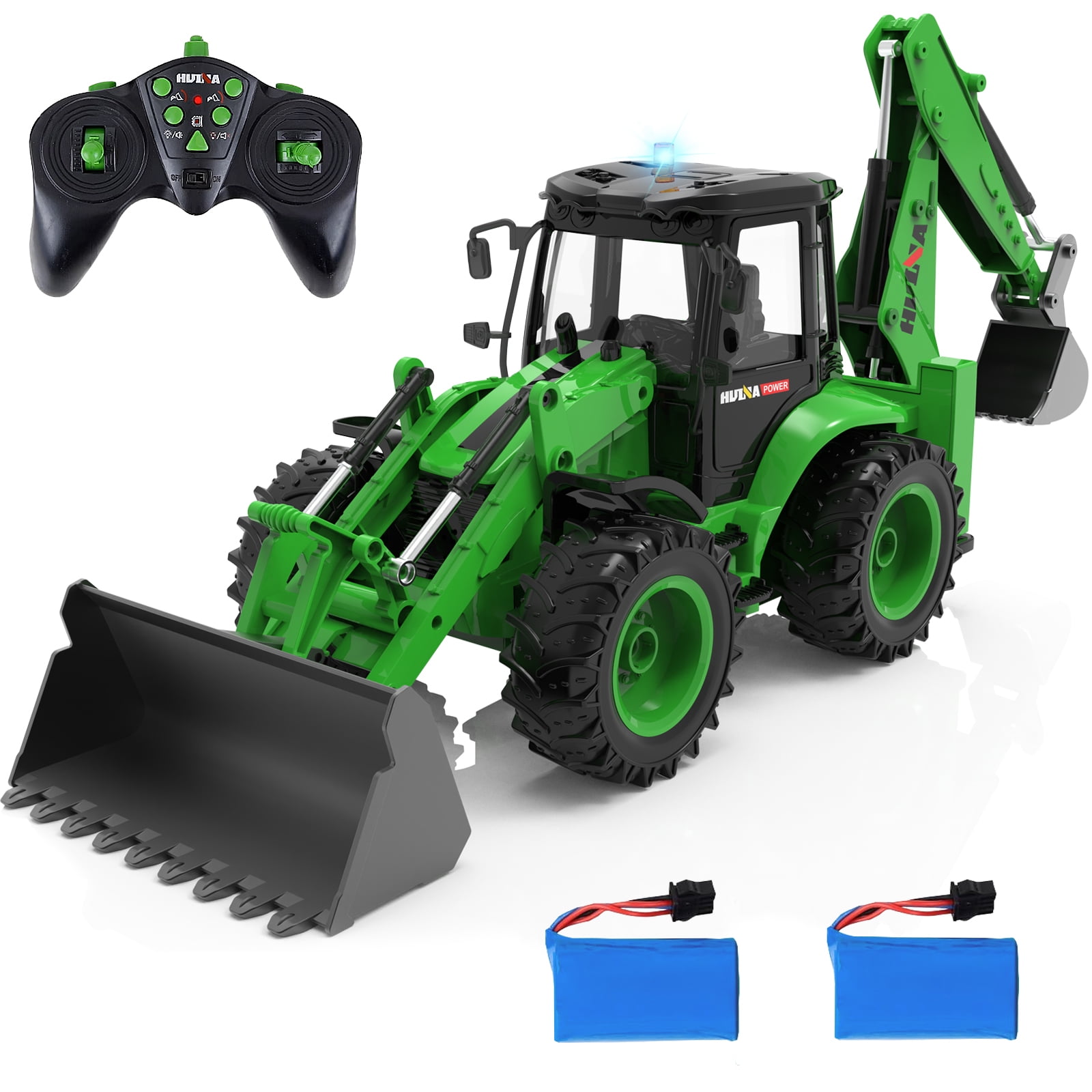Top Features of the remote control excavator That Can Enhance Your Project
The Essential Functions of Excavator That Keep It a Must-Have Tool
Excavators are vital in the building and landscape design markets. Their versatile add-ons permit for a range of jobs, from digging to demolition. Additionally, they boast exceptional digging depth and reach, powered by durable engines. Driver comfort and compact designs boost usability in different settings. What absolutely establishes excavators apart are their advanced hydraulic systems and longevity. Understanding these functions can clarify why they are considered essential devices on any work site.
Functional Add-ons for Improved Functionality
Excavators are effective devices on their own, the addition of versatile attachments greatly enhances their performance. These attachments change a basic excavator right into a multi-purpose tool, appropriate for a range of jobs. Pails, as an example, come in numerous forms and dimensions, enabling operators to dig, scoop, and move materials successfully. Hydraulic thumbs can be included for boosted gripping and handling of large products, such as logs or rocks.Furthermore, specialized add-ons like augers and breakers permit boring and demolition work, expanding the excavator's energy on building sites. remote control excavator. Grapples are one more option, ideal for moving and sorting debris. This versatility not only raises performance yet also decreases the requirement for several equipments, conserving time and prices. By gearing up excavators with the appropriate accessories, operators can tackle diverse projects, making them crucial in the building sector
Superior Excavating Deepness and Get To
Excavators are made with exceptional excavating depth and reach, enabling them to maneuver in tight areas and accessibility hard-to-reach locations. This ability is crucial for various construction and excavation jobs, where standard equipment might fail. With adjustable boom arms and extendable tracks, excavators can quickly navigate unequal surface while keeping stability.The digging depth can vary substantially among versions, usually varying from 10 to 25 feet, depending on the style and purpose. This attribute enables operators to excavate foundations, trenches, and other deep frameworks effectively. Furthermore, the reach of an excavator allows for precise excavating and product handling without rearranging the machine frequently, saving time and labor costs.Ultimately, the premium digging depth and reach of excavators make them indispensable for professionals looking for to complete intricate tasks with precision and efficiency. Their convenience enhances efficiency on job websites, showcasing them as a vital device in contemporary building and construction.
Powerful Engine Performance

When it comes to performance and performance on building sites, effective engine efficiency plays a crucial function in the capacities of an excavator. A robust engine produces considerable horse power, allowing the maker to tackle heavy-duty jobs with simplicity - remote control excavator. This toughness converts into faster cycle times, allowing operators to total jobs a lot more quickly.Additionally, powerful engines offer the needed torque to manage tough terrains and differed loads, making certain that the excavator can perform effectively under different problems. Whether it is raising, digging, or relocating products, the engine's performance directly impacts the overall functional performance of the machine.Furthermore, improvements in engine technology have led to enhanced gas efficiency, minimizing operational expenses while keeping power result. Eventually, the engine's efficiency functions as the backbone of an excavator, attesting its status as an essential device in the building and construction market
Advanced Hydraulic Equipments

Enhanced Lifting Capability
A significant improvement in raising ability can be credited to sophisticated hydraulic systems located in contemporary excavators. These systems make use of high-pressure fluid to generate higher force, enabling operators to raise larger lots easily. The design behind these hydraulics warranties peak performance, providing an excellent power-to-weight ratio that boosts general performance. Consequently, excavators can tackle demanding tasks, such as lifting large materials or tools, without endangering stability. In addition, the durable layout of hydraulic parts adds to boosted durability and reliability, making them appropriate for various building and construction settings. This boosted training ability not only decreases the moment needed for jobs however additionally minimizes the requirement for extra equipment, showing crucial for both efficiency and cost-effectiveness in the construction industry.
Improved Accuracy Control
Conventional excavators often had a hard time with accuracy, contemporary hydraulic systems have actually transformed control mechanisms, making it possible for drivers to perform jobs with exceptional accuracy. These advanced systems use proportional control valves that enable smoother and extra receptive movements, considerably lowering the margin for error. Operators can now carefully tune the excavator's motions, making it easier to navigate limited rooms and handle delicate materials. Boosted feedback systems further notify operators of real-time efficiency, making certain suitable coordination between the device and driver. This raised accuracy not just boosts effectiveness however likewise improves safety on job sites, decreasing the risk of mishaps. Because of this, modern-day excavators equipped with sophisticated hydraulic systems are vital devices for building and excavation projects needing thorough precision.
Driver Comfort and Exposure
Driver Discover More Here comfort and visibility are important parts in the design of modern excavators (remote control excavator). Features such as ergonomic seat style, boosted exposure choices, and efficient control formats significantly improve the driver's experience and efficiency. Prioritizing these facets warranties that operators can work efficiently and securely in different problems
Ergonomic Seat Layout
Comfort and exposure are vital in excavator design, with the ergonomic seat playing a crucial duty in improving the operator's experience. An ergonomic seat is engineered to support the driver's body, lowering tiredness during lengthy hours of procedure. Adjustable attributes, such as seat elevation, backrest angle, and lumbar assistance, cater to specific preferences and advertise excellent stance. These modifications improve comfort and make it possible for the driver to preserve focus on jobs without discomfort. Furthermore, a well-designed seat can offer better side assistance, enabling smoother maneuvering when the excavator is in operation. This thoughtful layout not just improves efficiency however likewise adds to total safety and security, making certain that operators can execute their responsibilities properly and effectively.
Improved Presence Features
The style of an excavator expands past just the seat, with improved exposure attributes playing a considerable role in operator convenience and overall safety. Big home windows and strategically positioned mirrors offer operators with a clear view of their surroundings, lessening blind areas. This style consideration enables for much better spatial recognition, which is vital in active workplace. In addition, lots of excavators include rearview cams and advanced tracking systems that assist drivers in maneuvering tight rooms. The combination of these presence features not just promotes safety and security however additionally decreases driver tiredness by making it possible for simpler monitoring of work areas. Inevitably, boosted visibility adds to a lot more efficient procedures and aids ensure that excavators can do their tasks efficiently and safely.
Control Design Effectiveness
While maneuvering complicated work websites, an effective control design substantially improves both operator convenience and exposure. A well-designed control arrangement assurances that operators can access crucial features with very little effort, reducing exhaustion during long hours. Ergonomic joystick placements and instinctive switch arrangements allow for smooth operation, enabling drivers to preserve concentrate on the job available. In addition, clear visibility of both the workplace and the control board is important for safety and security and precision. Modern excavators often incorporate adjustable seats like this and control settings to accommodate numerous operator choices, even more enhancing convenience. Eventually, a thoughtfully made control format not just enhances efficiency but likewise cultivates a much safer working setting by permitting operators to react quickly to transforming problems.
Compact Layout for Urban Environments
As metropolitan building and construction sites often deal with room restrictions, a small layout comes to be important for excavators operating in these settings. These machines are engineered to navigate tight areas, enabling efficient ability to move in jampacked task websites. A reduced footprint allows them to function very closely to existing frameworks, minimizing disruption and making best use of productivity.The compact style commonly includes shorter tracks and a tighter turning span, facilitating operation in narrow alleys and confined locations. Light-weight products contribute to alleviate of transportation, making it less complex to relocate the excavator from one area to an additional within the city landscape.Additionally, several portable excavators are outfitted with attributes such as extendable arms and versatile add-ons, enhancing their performance while maintaining a little dimension. This versatility permits operators to tackle a selection of jobs, from digging to demolition, all while suitable perfectly into the restraints of metropolitan settings.

Sturdiness and Maintenance Considerations
Sturdiness stands as a necessary consider the efficiency and long life of excavators, specifically in demanding urban environments. These devices go through strenuous problems, consisting of varying dirt kinds, severe temperature levels, and high-frequency use. High-quality materials and durable building are necessary for making sure that excavators can stand up to these obstacles without jeopardizing functionality.Regular maintenance is just as essential in preserving longevity. Arranged evaluations, prompt oil adjustments, and the replacement of used elements contribute considerably to an excavator's life-span. Operators needs to also take notice of hydraulic systems, tracks, and undercarriages, as these parts often bear the burden of wear and tear.Investing in long lasting excavators with comprehensive maintenance strategies boosts reliability and reduces downtime, ultimately bring about increased performance on building websites. Understanding the interaction between toughness and maintenance is vital for any person considering the purchase of an excavator for city projects.
Frequently Asked Concerns
Just How Do Excavators Compare to Other Construction Devices?
Excavators stick out amongst construction equipment due to their adaptability, allowing tasks such as grading, digging, and lifting. Compared to others, their hydraulic capacities offer greater effectiveness and power, making them essential on numerous job websites.
What Safety And Security Includes Are Consisted Of in Modern Excavators?
Modern excavators integrate different security features, consisting of click for source rollover defense systems, alarms, and advanced exposure improvements. These aspects function together to lessen dangers, making sure operator safety while enhancing efficiency on building and construction websites and other demanding settings.

Can Excavators Be Utilized in Winter Conditions?
Excavators can indeed be utilized in winter conditions, offered they are equipped with suitable winter attachments and preventative measures are taken. Correct upkeep and modifications improve their performance, guaranteeing efficient operation regardless of tough weather condition scenarios.
What Is the Average Lifespan of an Excavator?
The ordinary life-span of an excavator commonly varies from 7,000 to 10,000 hours of operation. This duration can substantially rely on maintenance methods, operating conditions, and the specific version's resilience and design attributes.
Exactly how Do I Choose the Right Excavator Dimension for My Task?
Selecting the right excavator size entails examining project scope, site problems, and material kinds. Think about aspects like reach, depth needs, and weight capability to ensure optimal efficiency and safety and security during operation. Dimension matters significantly in task success. In addition, the reach of an excavator enables for precise excavating and material handling without rearranging the machine frequently, conserving time and labor costs.Ultimately, the superior digging depth and reach of excavators make them essential for experts looking for to finish complicated tasks with precision and efficiency. Comfort and exposure are critical in excavator layout, with the ergonomic seat playing a necessary role in improving the operator's experience. The design of an excavator expands past just the seat, with improved visibility attributes playing a significant duty in operator convenience and total safety. Modern excavators usually incorporate flexible seats and control settings to suit various driver choices, even more enhancing comfort. Light-weight materials contribute to relieve of transportation, making it simpler to relocate the excavator from one location to an additional within the urban landscape.Additionally, numerous small excavators are outfitted with attributes such as extendable arms and functional attachments, enhancing their performance while keeping a small size.